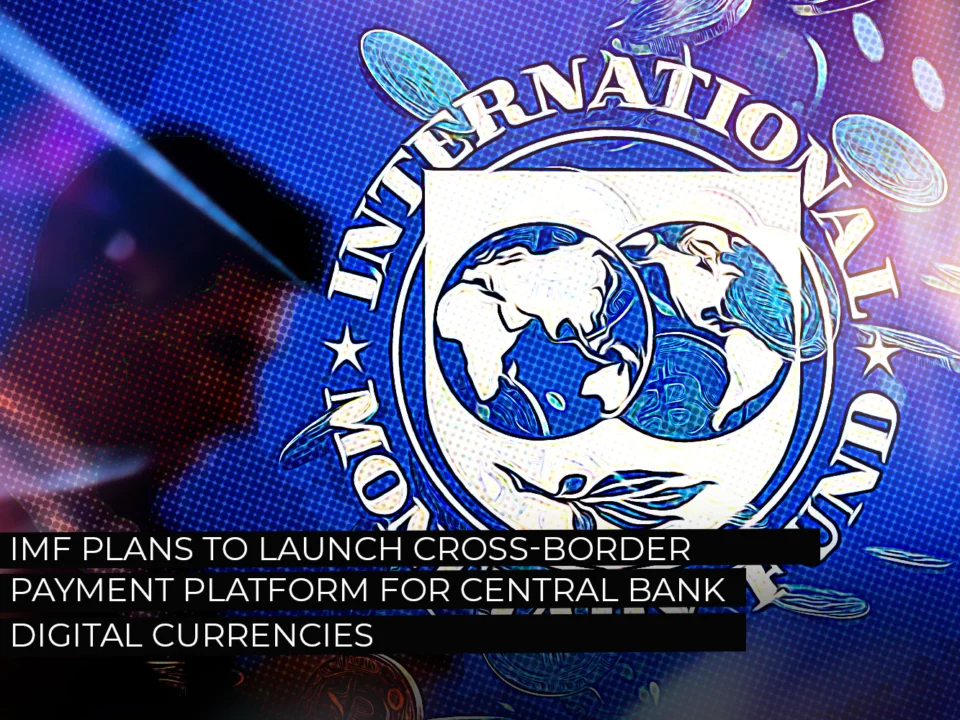The International Monetary Fund (IMF) is making significant strides to revolutionize global finance by planning to launch a cross-border payment platform specifically for Central Bank Digital Currencies (CBDCs). This initiative intends to streamline international monetary transactions, thus enhancing efficiency and reducing costs. As the world becomes increasingly interconnected, the potential benefits for international trade and economies are substantial. However, the implementation of such a platform also presents various challenges and considerations, requiring careful and strategic planning to ensure its success.
Objectives and Features of the IMF’s Cross-Border Payment Platform

The IMF aims to revolutionize the global financial landscape with its proposed cross-border payment platform specifically designed for Central Bank Digital Currencies (CBDCs). The primary objectives of this platform include:
- Enhancing Efficiency: Streamlining international transactions to reduce costs and processing times.
- Boosting Transparency: Implementing robust tracking mechanisms to ensure the transparency of cross-border payments.
- Promoting Financial Inclusion: Offering access to financial services in regions where traditional banking is limited or unavailable.
Key Features:
- Interoperability: Ensures that different CBDCs can seamlessly interact within the platform.
- Security Measures: Incorporates advanced cryptographic techniques to safeguard transactions.
- Regulatory Compliance: Aligns with international laws and standards to prevent illegal activities such as money laundering and fraud.
- Scalability: Designed to handle increasing transaction volumes as adoption rates grow.
The IMF’s new initiative holds promise to not only modernize but also democratize international finance, making it more accessible and equitable for all participating nations.
Potential Benefits for International Trade and Economies
The IMF’s cross-border payment platform for Central Bank Digital Currencies (CBDCs) promises substantial benefits for international trade and global economies. Here are some key advantages:
1. Reduced Transaction Costs
- Elimination of Intermediaries: By minimizing the number of intermediaries, the platform lowers fees associated with international transfers.
- Cheaper Cross-Border Payments: Enhanced efficiency leads to cost-effective transactions for businesses and individuals.
2. Faster Transaction Times
- Instant Settlements: Unlike traditional methods that take days, the CBDC platform offers near-instantaneous transaction settlements.
- Increased Market Participation: Faster payments encourage more entities to engage in global trade, stimulating economic growth.
3. Enhanced Security
- Blockchain Technology: Utilizing blockchain ensures transparent and secure transactions, reducing the risk of fraud.
- Regulatory Oversight: Increased oversight by central banks enhances trust in cross-border payments.
4. Financial Inclusion
- Access for All: Lower costs and faster transactions make financial services accessible to underserved populations.
- Economic Empowerment: Greater access to international markets empowers businesses in developing nations.
Comparison of Traditional vs. IMF CBDC Platform:
| Aspect | Traditional System | IMF CBDC Platform |
|---|---|---|
| Transaction Costs | High | Low |
| Speed | Several Days | Instant |
| Security | Moderate | High |
| Financial Inclusion | Limited | Broad |
By addressing these areas, the IMF’s platform stands to revolutionize international trade and bolster global economies, offering a more efficient and inclusive financial ecosystem.
Challenges and Considerations for Implementation
The IMF‘s plan to launch a cross-border payment platform for central bank digital currencies (CBDCs) presents both exciting opportunities and significant challenges. Key considerations include:
1. Interoperability:
- Ensuring different CBDCs can work seamlessly across borders.
- Establishing common standards to avoid fragmentation.
2. Security Concerns:
- Protecting the platform from cyber-attacks.
- Implementing robust authentication and encryption methods.
3. Regulatory Alignment:
- Harmonizing regulations across participating countries.
- Navigating varying legal frameworks and compliance requirements.
4. Scalability:
- Building a system capable of handling large volumes of transactions efficiently.
- Planning for future growth and technological advancements.
Consider these points carefully to grasp the complexities involved. The IMF must address these challenges to ensure the successful implementation and operation of the cross-border payment platform, fostering a more integrated and secure global financial system.
Frequently Asked Questions
What is the purpose of the IMF’s cross-border payment platform for Central Bank Digital Currencies (CBDCs)?
The IMF’s cross-border payment platform aims to facilitate more efficient and secure international transactions by leveraging Central Bank Digital Currencies (CBDCs). The platform is designed to reduce the latency and cost associated with traditional cross-border payments, ensuring quicker and more transparent financial exchanges between different countries.
How will the new platform benefit global trade and financial stability?
The new platform is expected to streamline international trade by providing faster transaction times and reducing the complexity of cross-border payments. By enhancing the efficiency and reliability of these transactions, the platform also aims to contribute to global financial stability. This can help bolster trust and confidence in international financial systems, potentially leading to increased economic cooperation and development.
Which countries are likely to participate in the IMF’s cross-border CBDC platform?
While specific countries have not been definitively identified, it is expected that both developed and developing nations with existing or planned CBDC initiatives will be interested in participating. The diversity of participating countries could enhance the platform’s utility and demonstrate its adaptability to various economic and regulatory environments.
What technological and security measures will be implemented on the platform?
The IMF plans to incorporate advanced technological features such as blockchain and distributed ledger technology (DLT) to ensure the security and integrity of transactions. Additionally, the platform will include robust encryption protocols, multi-factor authentication, and continuous monitoring systems to safeguard against cyber threats and unauthorized access, ensuring a high level of security for all participating entities.







